Maceo Hart-Kapic and Sherrie Hart of H&K Farms. (Courtesy of
H&K Farms)
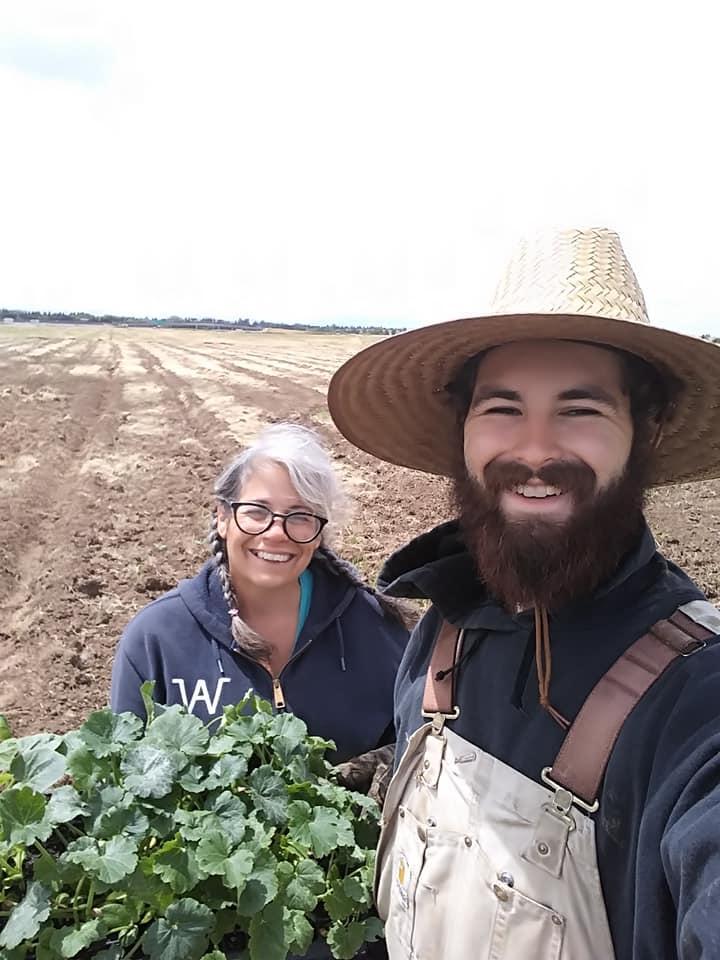
They launched AgroEco’s website and moved operations online in 2019, a move that would prepare them for a wave of new business as the pandemic squashed markets and disrupted food-supply chains that weren’t prepared for shifting consumer demand and purchasing patterns. That has channeled consumer interest toward CSAs nationwide, as widely reported by media outlets such as NPR and Civil Eats.
Since the pandemic started in March, AgroEco’s CSA program has grown from 10 to 90 members. They hired a full-time employee and purchased a van that doubled their carrying capacity. That spike in interest can be seen across the nation, as the majority of CSAs are now functioning at capacity and many, like Terra Firma Farm and Full Belly Farms — CSAs in Yolo County that serve the Sacramento region — have wait lists of hundreds of people wanting to join.
And it makes sense. CSAs are designed to feed the communities where the food is grown, so it doesn’t have to make its way through a laborious, disrupted food chain. That makes it reliable. Far fewer people are handling the food — maybe just the farmer. That makes it safer. And many, like AgroEco, deliver to the customers’ doorsteps. That works well in a pandemic for people who want to avoid going out.
“CSAs are providing a safe alternative that (people) can trust — there’s a premium on trust right now — and CSAs can deliver that more than any other food business model can,” says Evan Wiig, director of membership and communications at Community Alliance with Family Farmers.
But while consumers who can afford it have found confidence in food security among CSAs, there is a looming question among the farming community: Will this boon be temporary, or will it permanently elevate the value consumers give to the alternative food networks in their communities over the industrialized, global food market?
In the Capital Region, where farm-to-fork is a culinary and consumer trend — and has become a dietary staple for many — the locavore focus means more than readily available food in times of crisis. The CSA model is built on a pledge to grow and consume food that sustains the environment, its resources and human health, and on a system of food sovereignty and economics that stay within communities.
Yisrael Family Farm leads food sovereignty in Sacramento’s Oak Park neighborhood. Chanowk and Judith Yisrael grow their own food to sustain their family and teach members of their community how to grow their own. Their farm produces roughly 1,400 pounds of food beyond what they consume annually. That’s sold to the community as food bags (like a CSA) on their website and picked up curbside, which sell out in minutes, says Judith Yisrael.
But the challenges for CSAs are many. Some companies, like Good Eggs in the Bay Area, look like CSAs and offer far greater variety and flexibility in a produce box (but don’t operate a farm and may secure produce far from the communities they sell in) have lured customers from local, farmed-based CSAs.
Wiig points out the conceptual difference between produce box programs that don’t come from local farms, offering products like bananas and tomatoes in February, versus those that do.
Local farmed-based CSAs strictly sell what grows seasonally in their region. “There’s something very human about that sense of time and process and place, and we’ve really lost that with our global food system,” says Wiig. “The CSA really allows you to get back in tune with that. When you start eating seasonally and you look forward to that first tomato, like, ‘Ah, man, it’s exciting,’ and you have that anticipation and that sense of time.”
Whether CSAs remain a backbone of consumers’ food supply chain will depend on how they perceive their value on the other side of the pandemic. What small farmers do now could influence that heavily and the key may be to build upon their natural affinity to work together to meet customer demand in diverse offerings, flexibility and convenience.
Radically different microclimates, soil types, drainage, skills and interests all influence what each farmer grows best, says Wiig. “If you can do regional collaborations, you can still offer a lot more diversity and a little more convenience for your customers.”
AgroEco farm partners contribute eggs, root vegetables like sweet potatoes and radishes that are hard to produce at Hart-Kapic’s own farm, and specialty crops like cherry tomatoes. “(We’re able) to help support older farmers who aren’t doing CSA models or don’t have the capacity to, but grow a lot of really, really beautiful vegetables,” says Hart-Kapic.
Soon, fresh meat will be available through the CSA, a product of a newly-formed partnership with Trail Brothers to raise chickens, pigs and cattle on Hart-Kapic’s farm. When the CSA benefits, he says, that’s shared among the many farmers in the community, making them more resilient to the economic shocks the industry is experiencing.
But not all farmers have found the same opportunities to benefit from CSAs. Farmers who grow specialty crops like cabbage or those who raise duck and exclusively sell to restaurants haven’t been able to pivot to the CSA model. While chefs love to cook with ingredients like these, consumers at home don’t, explains Wiig.
“I’ve seen a lot of houses go up for sale and cold storage units being offered for sale on Craigslist from farmers that I know,” says Hart-Kapic. “Even though CSAs have grown, other programs in a lot of diversified farms have not and have actually contracted or gone away completely because of coronavirus.”
Hart-Kapic’s own business plan for H&K Farms relies heavily on agritourism events like agricultural education, workshops and field trips. That’s all on pause. The CSA has supported the farm as the sole source of revenue for the last three months.
Sustaining that growth is going to be really difficult, he says. They’ve seen a 10 percent drop in membership from those who prefer to choose their produce or struggle to work with items they don’t normally eat. But that’s the inherent design of a CSA — members receive what the farmer grows and its a system of shared risk and reward.
But AgroEco is looking to quickly adapt. With doorstep deliveries, flexible payment options — traditional upfront membership fees provide the funds small farmers need to cover their costs without going into debt — and customizable orders H&K Farms’ new public relations manager will soon implement, this CSA, like many CSAs elsewhere, are evolving to meet customer demands. Wiig says if customers want local farms in their communities, like farmer’s markets and don’t want a food system dominated by a small handful of monopolies, then they need to continue supporting CSAs in the bad times — and the good.
Recommended For You
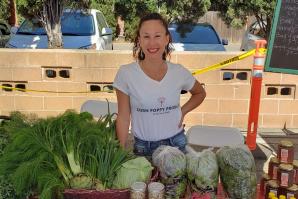
A One-Woman Urban Farm
The owner of Corn Poppy Produce in Stockton talks about building her urban farm business
Jessica Bryant, a former personal trainer who was raised on a cattle ranch, started Corn Poppy Produce in 2019 to promote healthier living in the Stockton community.
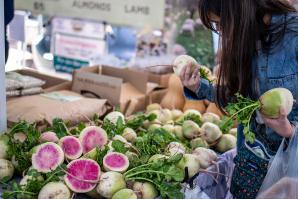
Growing Pains
Local farmers work hard to respond and adapt to the coronavirus pandemic
Comstock’s spoke with Paul Towers, executive director of Community Alliance with Family Farmers, a Davis-based nonprofit dedicated to supporting family farmers and community-based agriculture, to find out how small farmers in the Capital Region are faring during the coronavirus pandemic.
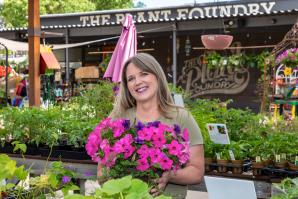
Growing During a Pandemic
Renewed interest in gardening helps The Plant Foundry take root
Angela Pratt was ready to close her gardening shop during the COVID-19 crisis until The Plant Foundry was deemed an essential business by state and county guidelines. Pratt turned a negative into a positive by changing business practices to better serve customers.
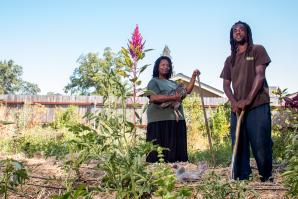
Grow Your Own Way
Does the evolution of urban agriculture reveal a schism in the community or a movement picking up steam?
Ten years into the movement, and urban farming in the Sacramento region has garnered widespread support. Agrihoods now represent the latest development in the movement — but will they strengthen or overshadow it?



